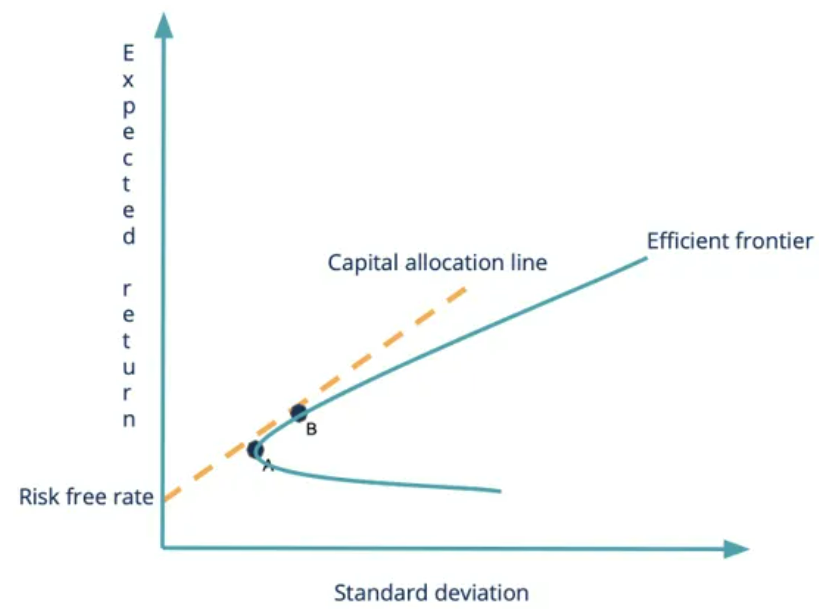Modern Portfolio Theory (MPT)
Lesson 7
According to the Corporate Finance Institute, Modern Portfolio Theory (MPT) is an investment theory that allows investors to assemble a portfolio that maximizes expected return for a given level of risk. The theory assumes that investors are risk-averse; for a given level of expected return, investors will always prefer the less risky portfolio.
According to the Modern Portfolio Theory, an investor must be compensated for a higher level of risk through higher expected returns. MPT uses diversification – owning a portfolio of assets from different classes - as a bedrock principle. Owning a diversified portfolio is less risky than holding a portfolio of similar assets.
Correlation
Portfolios can be diversified in a multitude of ways. Assets can be from different industries, different asset classes, different markets (i.e., countries), and of different risk levels. The key to a diversified portfolio is holding assets that are not highly correlated.
The Efficient Frontier
According to the MPT, a portfolio frontier, also known as an efficient frontier, is a set of portfolios that maximizes expected returns for each level of standard deviation (risk). Here is an illustration of the Efficient Frontier.
Expected return
The expected return of a portfolio is the expected value of the probability distribution of the possible returns it can provide to investors.
Consider an investor holds a portfolio with $4,000 invested in Asset Z and $1,000 invested in Asset Y. The expected return on Z is 10% ,and the expected return on Y is 3%. The expected return of the portfolio is:
Expected Return = [($4,000/$5,000) * 10%] + [($1,000/$5,000) * 3%] =
[0.8 * 10%] + [0.2 * 3%] = 8.6%
Standard deviation
Standard deviation measures the level of risk or volatility of an asset. It is used to determine how widely spread out the asset movements are over time (in terms of value). Assets with a wider range of movements carry higher risk.
The standard deviation of a portfolio depends on:
The standard deviation of each asset in the portfolio.
The weights of each asset
The correlation between each asset.
Risk-free rate
All assets carry some degree of risk; therefore, assets that generally have low default risks and fixed returns are considered risk-free. An example of a risk-free asset is a 3-month government Treasury bill.
Efficient frontier
The upper portion of the curve (point A onwards) is the “efficient frontier” – it is the combination of risky-assets that maximizes expected return for a given level of standard deviation. Therefore, any portfolio on this portion of the curve offers the best possible expected returns for a given level of risk.
Point “A” on the efficient frontier is the minimum variance portfolio –
the combination of risky-assets that minimizes standard deviation/risk.
Point “B” is the optimal market portfolio, which consists of at least one risk-free asset. It is depicted by the line that is tangent to the efficient frontier, which is also called the Capital Allocation Line (CAL).
An example
A portfolio comprised of 60% stocks and 40% bonds would be considered efficient, since a decline in stocks during a recession would be at least partially offset by the expected rise in bonds.


Leave a comment
Comment as a guest: